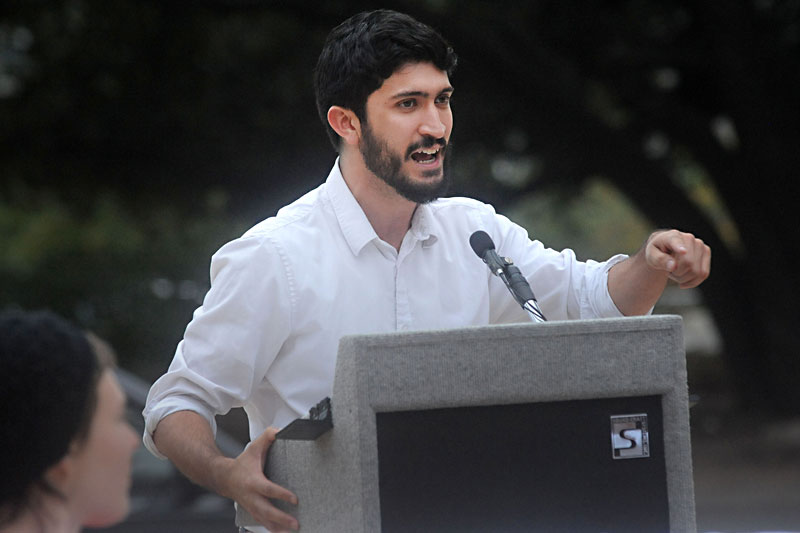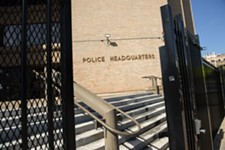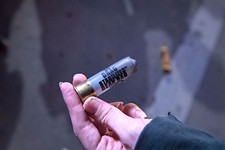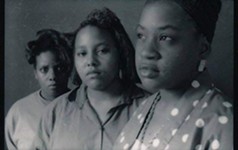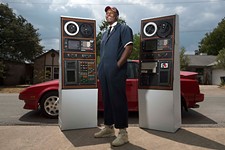Asking About APD
Community policing needs differ across districts
By Kahron Spearman, Fri., May 13, 2016
On May 9, the city finished conducting its survey on "the Austin Police Department's approaches to community policing and how they may be improved." In an effort to encourage participation in the survey, several City Council members held town halls. At both District 4 and District 6's town halls, a clear contrast could be seen with regards to what East Austin and West Austin residents believe APD's focus should be.
One district asks what the police can do for them, while the other asks what the police are doing to them and how can it be abated.
Among D6's complaints: promptness in calls to the outer reaches of Austin, fixing roads, and an apparent heist ring involving Indian-American residents as victims and the thieves' preference for their 24-karat gold. D4's complaints revolved around much deeper discussions of the police's overall engagement with the community, preferably at eye level. Unprompted, one D4 local – a middle-aged white male – complained about police choppers flying over his residence every weekend.
D4 Council Member Greg Casar, in a later meeting with the Chronicle, openly acknowledged the differences and his challenges. "I'm sure the helicopter is useful in some situations, but generally I'd sell the helicopter and spend it on the sorts of services that [my constituents] are asking for – that would be my preference. The hard thing is figuring out how to get there."
Recruitment was a chief topic in Casar's town hall with Richard Brady of the Matrix Consulting Group – the firm conducting the study. D6 Council Member Don Zimmerman, in his town hall, immediately highlighted the study's nearly $200,000 price point. "Reading between the lines, when the city came up with a request for proposal, it was pretty clear is wasn't just about how many police you need," Brady said. "It wasn't just about budget requests. It's really more fundamental than that. It's more about everything that is policing."
Brady noted that the department had more turnover than any department that he'd seen during his time consulting – suggesting some deep internal struggles, even some competing ideas on the future of APD's policies. It's no secret, or small issue, that significant numbers of recruits often arrive out of combat or combat training to shore up the numbers, switching their military service colors for APD uniforms.
Combined with the force's penchant to envision people as metric points, and the increasingly militarized mentality, D4 residents say patrols are often reduced to police officers rolling through neighborhoods, treating citizens like the plague. In fact, according to multiple attendees of the D4 meeting – aside from APD's "designated representatives" – officers' "interactions with the public" range from passive-aggressive to nonexistent.
One resident suggested recruitment from within Austin's underserved communities, not only for the sake of diversity, but also for the under-appreciated value of understanding a city's culture. Outsourcing for diversity helps Equal Opportunity metrics, but can prove highly problematic, if the incoming officer has little to no understanding of the community he or she will patrol. The lack of connection is tangible.
In the Office of the Police Monitor's report for 2014, blacks accounted for 24% of arrests and 28% of use-of-force instances, despite being less than 8% of Austin's voting-age population. Latinos were arrested at a 34% clip, with a 35% use-of-force instance rate. The police's extreme focus on traffic-related events peels back additional layers. Of stops officially recorded, blacks accounted for 12% of all stops, with a 24% stop-and-search rate. Correcting disproportionality in the police via community/area recruitment could also lead to significant improvement in disproportionate arrests, use-of-force events, and general complaints (internal and external).
The challenges of homelessness and mental health made their way into the town halls – with the idea that officers could become valuable connectors to assistance for the foundational problems occurring in their communities. Residents suggested a multipronged solution, starting with better connections between APD officers and city/county resources – such as Austin Travis County Integral Care and numerous nonprofits.
In the final report of President Barack Obama's Task Force on 21st Century Policing, it was noted "community policing must be a way of doing business by an entire police force, not just a specialized unit of that force." Further, the report quoted Camden County, N.J., Police Chief J. Scott Thomson as saying community policing "cannot be a program, unit, strategy, or tactic.
"It must be the core principle that lies at the foundation of a police department's culture. The only way to significantly reduce fear, crime, and disorder and then sustain these gains is to leverage the greatest force multiplier: the people of the community."
The tax dollars needed to effect change within APD are not in D4, which has the highest number of renters of any district and whose residents often feel targeted by the police. For those in D6, whose homes provide plenty of tax money, interaction with police often requires special circumstances. At some disturbing levels, it may be that each district is receiving the type of policing their respective tax dollars demand.
Got something to say on the subject? Send a letter to the editor.





